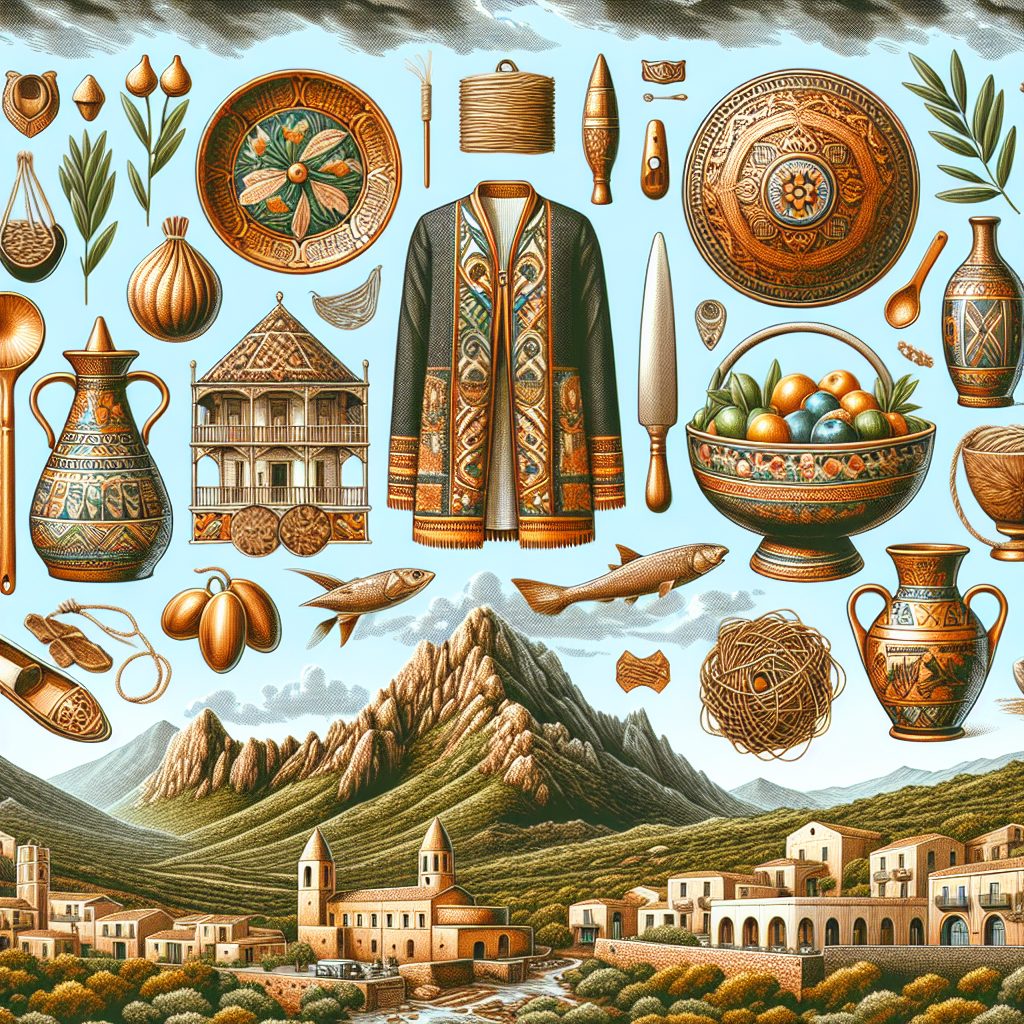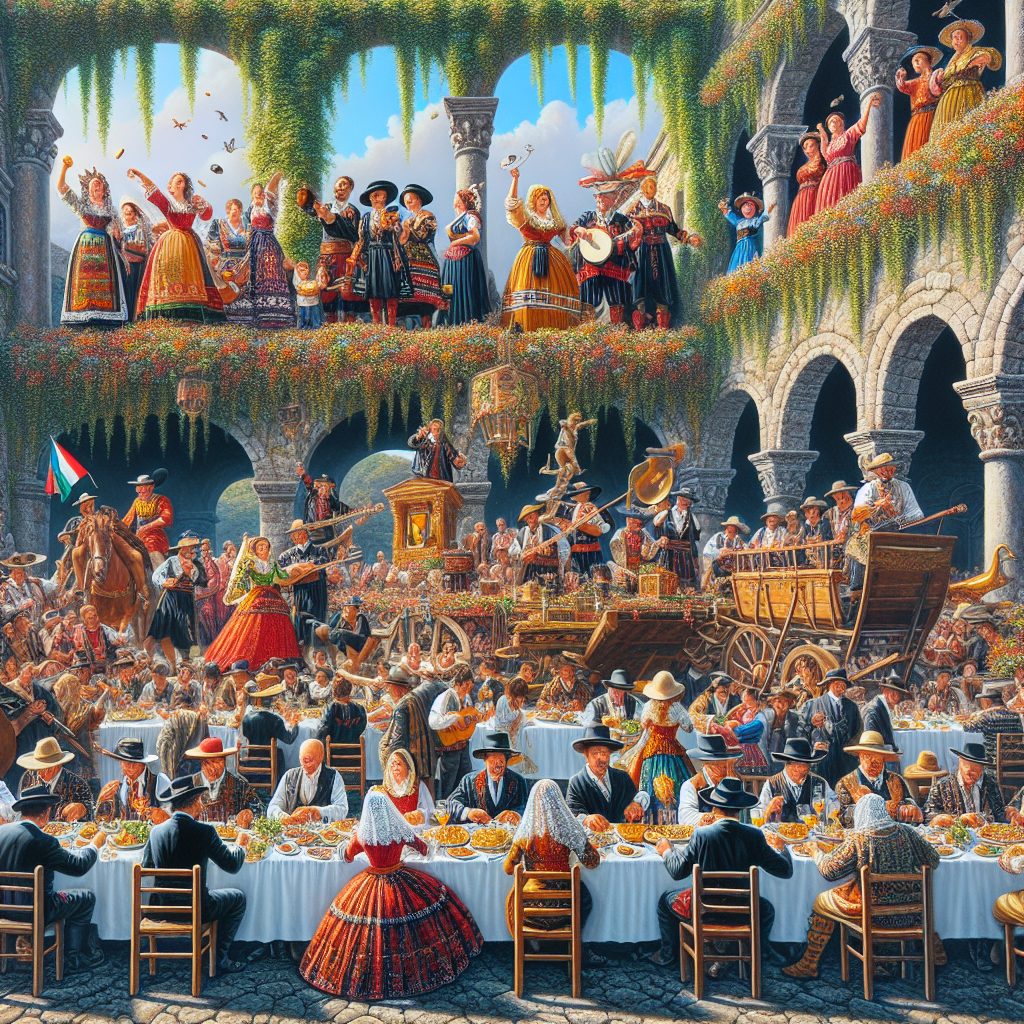Barbagia rural traditions are deeply rooted in the history and culture of the Barbagia region in Sardinia, Italy. This area is known for its rugged landscapes, traditional villages, and strong sense of community. One unique feature of Barbagia rural traditions is the preservation of ancient customs and rituals that have been passed down from generation to generation. These traditions encompass various aspects of everyday life, including agriculture, craftsmanship, and religious ceremonies.
The impact of these rural traditions can be seen in the strong bond that exists within Barbagia communities. The people of this region have a deep respect for their land and take great pride in upholding their traditions. Their close connection to nature is reflected in their agricultural practices, which are based on sustainable methods and a deep understanding of the local ecosystem. Traditional crafts, such as weaving and woodcarving, are also highly valued in Barbagia, and many artisans still practice these ancient crafts today.
Moving forward, this article will delve into the key takeaways of Barbagia rural traditions, exploring the various aspects that make this region so unique. We will discuss the significance of agriculture in shaping the lifestyle of the Barbagia people, as well as the role of craftsmanship in preserving their cultural heritage. Additionally, we will examine the importance of religious rituals and celebrations in Barbagia, highlighting their ability to strengthen community ties. Through these key takeaways, readers will gain a deeper understanding of the rich traditions and vibrant culture that can be found in Barbagia.
Key Takeaways
1. Barbagia, a region in central Sardinia, Italy, is known for its unique and rich rural traditions, which have been passed down through generations. These traditions reflect the strong cultural and historical heritage of the region.
2. The annual Autunno in Barbagia festival provides an opportunity for tourists to witness and experience the rural traditions of the region. During this festival, visitors can explore different towns and villages, each showcasing their own unique local traditions, artisan crafts, artwork, and culinary specialties.
3. The traditional attire of Barbagia is an essential part of the region’s cultural identity. The outfits worn by men and women differ significantly, with men often sporting dark, sleeveless jackets, black or dark pants, and wide-brimmed hats, while women wear colorful embroidered aprons, intricate headpieces, and embroidered blouses.
4. One of the most fascinating aspects of Barbagia’s rural traditions is the intriguing practice of local festivals, known as “cortes apertas.” These festivals involve opening the doors of homes to visitors, who are welcomed with open arms to witness traditional dances, taste local food and wine, and engage with the community.
5. Food plays a central role in Barbagia’s rural traditions, with traditional dishes that have been passed down for centuries. Sardinian cuisine is known for its simplicity and use of locally sourced ingredients, such as pecorino cheese, sausages, wild game, and homemade bread. These traditional dishes can be sampled during the Autunno in Barbagia festival, as well as in local restaurants and agriturismi throughout the year.
What Are the Fascinating Barbagia Rural Traditions?
The Culture and Heritage of Barbagia
Barbagia, a region nestled in the heart of Sardinia, Italy, boasts a rich tapestry of rural traditions that are deeply rooted in its ancient culture and heritage. These customs, passed down through generations, provide a captivating insight into the lives of the Barbagian people.
From vibrant festivals and unique craftsmanship to culinary delights and folklore, the Barbagian rural traditions offer a glimpse into the soul of this enchanting region.
Colorful Festivals and Rituals
Barbagia is renowned for its elaborate festivals and rituals that celebrate various aspects of local life. These events bring together communities, uniting them in a shared sense of identity and belonging.
One prominent festival is Mamoiada’s “Mamuthones,” where masked men, clad in traditional sheepskin costumes, march through the streets accompanied by the rhythmic sound of cowbells. It is a mesmerizing spectacle that pays homage to ancient agricultural traditions.
Another notable event is the “Cortes Apertas,” which translates to “Open Courts.” During this festival, local families open their homes, showcasing their craftsmanship, traditional clothing, and delicious homemade delicacies. Visitors can immerse themselves in the vibrant ambiance and admire the artisans’ skills firsthand.
Intricate Craftsmanship and Artistry
The Barbagian rural traditions also highlight the region’s exceptional craftsmanship and artistry. Skilled artisans employ ancient techniques to create unique and intricate handmade items, such as traditional textiles, ceramics, and wooden sculptures.
The town of Orgosolo is particularly renowned for its stunning murals, which depict social and political themes. These vibrant artworks not only beautify the streets but also serve as a poignant expression of local identity and resistance.
Culinary Delights and Traditional Recipes
The culinary traditions of Barbagia are both diverse and mouthwatering. The region boasts a wide array of traditional dishes, often prepared using locally sourced ingredients and age-old recipes.
One iconic Barbagian delicacy is “Culurgiones,” a type of handmade pasta filled with potatoes, pecorino cheese, and fresh mint. This delectable dish showcases the skillful hands of local cooks, resulting in a unique taste that lingers on the palate.
Additionally, Barbagia is renowned for its succulent roasted meats, such as “Porceddu,” a whole suckling pig cooked slowly over an open fire. These culinary traditions not only offer a treat for the taste buds but also serve as a testament to the region’s agricultural roots.
Folklore and Ancient Beliefs
Barbagia’s rural traditions are intertwined with folklore and ancient beliefs, adding an air of mystery and enchantment to the region. Legends and mythical creatures form a significant part of the local culture and storytelling traditions.
One intriguing example is the figure of the “Mamuthones.” According to folklore, these masked beings represent ancient demons or ancestral spirits that provide protection and good fortune to the community. The accompanying sound of cowbells is believed to ward off evil spirits.
These age-old stories and beliefs continually inspire and shape the cultural landscape of Barbagia, ensuring that its folklore remains a cherished part of everyday life.
Explore the Enchanting Barbagia Rural Traditions
- Attend the Mamuthones festival in Mamoiada and witness the mesmerizing procession of masked men.
- Participate in a Cortes Apertas event, immersing yourself in the vibrant atmosphere and experiencing local craftsmanship firsthand.
- Visit Orgosolo to admire the stunning murals that adorn the town’s walls and gain insight into the social and political themes depicted.
- Indulge in the flavors of Barbagia by savoring traditional dishes like Culurgiones and Porceddu.
- Engage with locals to learn about the region’s folklore and ancient beliefs, gaining a deeper understanding of Barbagia’s cultural heritage.
Frequently Asked Questions
1. What are Barbagia rural traditions?
Barbagia rural traditions refer to the cultural practices and customs followed by the rural communities living in the Barbagia region of Sardinia, Italy. These traditions have been passed down through generations and showcase the unique heritage of the area.
2. What are some common Barbagia rural traditions?
Some common Barbagia rural traditions include the celebration of traditional festivals like “Cortes Apertas,” where locals open their houses to showcase their artisanal crafts and culinary traditions. Other traditions include sheep farming, cheesemaking, traditional costumes, and folk music.
3. How important are Barbagia rural traditions to the local communities?
Barbagia rural traditions hold a significant importance to the local communities as they contribute to preserving their cultural identity and heritage. These traditions are deeply rooted in the lifestyle of the people and act as a connection to their ancestors.
4. Can tourists experience Barbagia rural traditions?
Yes, tourists have the opportunity to experience Barbagia rural traditions by visiting during cultural festivals, exploring rural areas, and participating in guided tours. This allows them to witness traditional crafts, taste local cuisine, and learn about the customs firsthand.
5. Are there any traditional events that showcase Barbagia rural traditions?
Yes, several traditional events highlight Barbagia rural traditions. The “Cortes Apertas” festival mentioned earlier is a prominent example. Additionally, events like the “Sagra del Redentore” and “Festival of Saint Sebastian” bring together locals and visitors to celebrate the region’s traditions.
6. How do Barbagia rural traditions contribute to the local economy?
Barbagia rural traditions play a vital role in the local economy. They attract tourists, which boosts the tourism sector, and support small-scale agricultural practices such as farming and cheesemaking. Furthermore, the sale of traditional handicrafts and products helps generate income for local artisans.
7. What is unique about Barbagia rural traditions compared to other Italian regions?
Barbagia rural traditions are unique due to the region’s isolation, rugged landscapes, and historical influences. The area has preserved ancient customs and focused on maintaining its cultural heritage, making it distinct from other Italian regions.
8. How have Barbagia rural traditions evolved over time?
Barbagia rural traditions have evolved to adapt to modern times while still maintaining their core elements. Changes in technology, societal shifts, and tourism have influenced the way these traditions are practiced, but efforts are made to preserve their authenticity.
9. Are there any traditional crafts associated with Barbagia rural traditions?
Yes, there are several traditional crafts associated with Barbagia rural traditions, including handwoven textiles, wood carving, basketry, ceramics, and ironwork. These crafts reflect the region’s cultural heritage and showcase the skills of local artisans.
10. How can one support the preservation of Barbagia rural traditions?
Supporting the preservation of Barbagia rural traditions can be done by attending cultural events and festivals, purchasing locally made products, supporting artisan cooperatives, and learning about the traditions through guided tours or educational programs. Spreading awareness about the significance of these traditions can also help in their preservation.
Final Thoughts on Barbagia Rural Traditions
Barbagia rural traditions offer a glimpse into the rich cultural heritage of the region and provide a unique experience for both locals and visitors. These traditions serve as a reminder of the deep-rooted connection between the people and their land, highlighting the importance of preserving and celebrating their customs.
By embracing and supporting Barbagia rural traditions, we not only contribute to the local economy but also play a role in safeguarding the intangible cultural heritage of this beautiful region. It is through the continuation of these traditions that the spirit of Barbagia lives on, inspiring generations to come.





